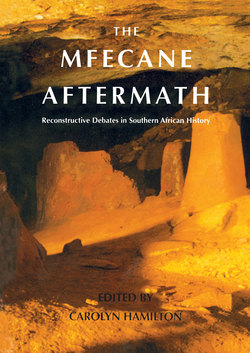Читать книгу Mfecane Aftermath - John Wright - Страница 7
На сайте Литреса книга снята с продажи.
ОглавлениеPreface
This book comprises a revised selection of the papers delivered at the colloquium 'The Mfecane Aftermath: Towards a New Paradigm', held at the University of the Witwatersrand in September 1991. A full list of the papers presented at the colloquium is reproduced at the end of the volume.
The book has been divided into three sections. Each of the sections is preceded by a specially commissioned contextualising essay which offers an overview of the section, together with discussion of the main areas of debate among the contributors to the section. The contextualising essays are designed to serve as introductions to the dense arguments which follow, while their review of debated evidence gives non-specialists the benefit of the evaluation of a scholar well versed in that particular area.
Part One takes stock of the major historiographical and methodological issues. Part Two is concerned largely with the history of the eastern coastal region in the late eighteenth and early nineteenth centuries, and deals with some of the major debates over sources and their interpretation. Part Three examines events in the interior of southern Africa in the same period. Readers will detect greater methodological refinement in the use of sources in the essays in Part Two than in Part Three, as well as more detail and a better established chronology of political events. This unevenness is a consequence of the 'Zulu aftermath'. Interest in the Zulu kingdom resulted in a long-standing concern with the history of the KwaZulu-Natal region, whereas the myth of the depopulated interior underlay the neglect, until recently, of the precolonial history of the highveld. Scholars like John Wright and Jeff Peires, working on the coastal areas, are able to draw on substantial bodies of recorded oral traditions, about which considerable background material exists, whereas the oral history of the interior has been relatively little attended to. The essays in Part Three prepare the ground for studies of events and close analysis of the pertinent texts of the kind already begun for the coastal regions.
Together, the various contributions to the book provide one of the first detailed overviews of the major developments of the later precolonial period in southern Africa. While the volume offers the beginnings of a synthesis, there has been little attempt to impose editorial consistencies of historical detail, usage of concepts and vocabulary among the various essays, for these differences frequently signal the debates that are the very stuff of the book.
The collected essays do not represent a definitive account of the later precolonial history of southern Africa. Rather, they point up issues of contention among scholars working in this field, reveal lacunae in our knowledge of the period and suggest areas for further research.
One noticeable gap in this collection is the lack of contributions from black South African historians. Some scholars, like the Zulu nationalist historian, Simon Maphalala, have, since the colloquium, begun to engage in these debates. It is to be hoped that the publication of this volume, at a time when the study of the precolonial past is at last freed from association with the construction of apartheid's ethnicities, will stimulate a new generation of young historians to work on these topics and to make good that omission.
Another gap is the absence of a contribution from the initiator of the debate, Julian Cobbing. Although he presented two papers at the colloquium, and initially agreed to prepare an essay for this volume, Cobbing subsequently declined to submit his contribution. When the book was in proof it was sent to Cobbing together with an invitation to contribute an Afterword. Clarification and qualification of his arguments in the light of the discussions generated in this volume, as well as his view of how the debate has developed, would have been an invaluable addition to the corpus of material presented here. These Cobbing provided in response to the invitation, but declined to have them published without engaging in further debate with the contributors to this volume. To permit one of the protagonists in these debates such a privileged position would have been at the expense of the others. Regretfully, the editor and publishers abide by Cobbing's desire to have all or nothing in the book. Cobbing's single, but seminal and controversial, publication on the topic is readily available in the Journal of African History and his ideas are extensively discussed and debated in the following pages.
The text is augmented by detailed maps. In addition, there is an extensive consolidated bibliography to which extra items of interest – in particular, recent publications concerning the precolonial history of the region – have been added. It will be a useful guide to students starting out in this field, as well as a valuable resource for established scholars seeking their way through the textual intricacies of varied editions and secondary texts that have become the primary sources for the historiographical and methodological debates that are a feature of this volume.
CAROLYN HAMILTON
